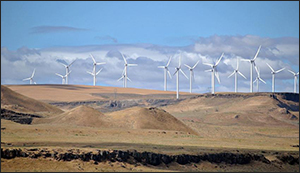Probing the limits of wind power generation
4. 9. 2015 | Phys.org | www.phys.org
Wind turbine farms now account for an estimated 3.3 percent of electricity generation in the United States, and 2.9 percent of electricity generated globally.
The wind turbine industry is growing along all vectors, with increasingly sprawling farms of ever-larger and more densely sited turbines producing growing amounts of power. But the laws of physics are stubborn - wind turbines remove kinetic energy from the atmospheric flow. So engineers and scientists have sought realistic estimates of the limits to large-scale wind generation. Such estimates could provide guidelines for the maximum size and density to which a wind turbine farm can increase before reaching a point of diminishing returns.

An international group of researchers recently collaborated on a comparison of two different methods of estimating the limits of power generation for wind farms, which has been reported in the Proceedings of the National Academy of Sciences. They approximated the dynamics by which wind turbines remove kinetic energy from the atmosphere using the vertical kinetic energy (VKE) flux method and compared the results to those from the Weather Research and Forecasting (WRF) regional atmospheric model.
Their findings are complex, and while the two techniques produce results that diverge in many ways, together, they illuminate atmospheric variables that are not obviously revealed by the two methods in isolation.
Read more at Phys.org
Image Credit: Steve Wilson / Wikipedia
-jk-




